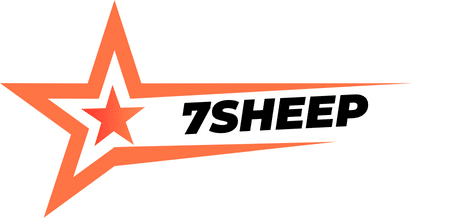How Does Participation in Social Dancing Affect Cognitive Aging?

In the quest for healthy aging, your pursuits might have led you to various activities promising physical and mental wellbeing. However, how often have you considered dancing as a beneficial activity in this regard? Dancing is not just a form of entertainment or artistic expression. Recent studies indicate that it might have a profound impact on cognitive health, particularly among older adults. As you traverse the domain of scholarly research, you’ll find intriguing evidence on the potential benefits of social dancing for cognitive aging.
The Relationship between Physical Activity and Cognitive Health
The connection between physical activity and cognitive health, especially among older adults, has been a subject of numerous studies. Before diving into the specifics of dancing, let’s explore this broader relationship.
Lire également : How Can Exoskeleton Devices Assist in Rehabilitation for Stroke-Induced Hemiplegia?
A multitude of studies indexed on PubMed and PMC have highlighted the significant influence of physical activity on cognitive health, especially for older adults. For instance, a meta-analysis of intervention studies, retrieved from CrossRef and Google Scholar, showed that regular physical activity can slow down cognitive decline, thereby reducing the risk of dementia (doi: 10.1111/j.1532-5415.2008.02125.x).
Physical exercise supports brain health in multiple ways, including enhancing neuroplasticity, promoting the formation and survival of new nerve cells, and improving circulation in the brain. As a result, it can positively influence cognitive functions such as memory, attention, problem-solving, and decision-making.
Cela peut vous intéresser : Stylish and eco-friendly scrub caps for healthcare professionals
The Unique Role of Dancing
Among various forms of physical activity, why does dancing stand out? What makes it a compelling topic of study for cognitive health researchers?
Dancing is a complex activity that demands more than just physical agility. It involves rhythm, coordination, balance, memory, and social interaction – all of which stimulate different parts of the brain simultaneously. Therefore, the cognitive involvement in dancing goes far beyond what most physical activities require.
A study on PubMed, titled "Effects of Dance on Cognitive Function among Older Adults: a Protocol for Systematic Review and Meta-analysis", has emphasized the role of social dancing in maintaining and even improving cognitive functions in the elderly (PMID: 30409127).
Evidence from Detailed Studies
Let’s now delve deeper into the specific evidence from research studies dedicated to understanding the link between dancing and cognitive health.
One notable research indexed by PubMed and PMC, conducted by Kattenstroth et al., subjected a group of older adults to an intervention involving a six-month dance course. The results showed a significant improvement in their cognitive, physical, and mental health as compared to the control group.
Another study on older adults, published on Google Scholar and CrossRef, found that those who participated in a 12-week ballroom dancing program showed improvements in spatial cognition and neurotrophic factors, which are critical for learning and memory (doi: 10.3389/fnagi.2017.00305).
The Comparative Advantage of Dancing
In comparison to other forms of physical activity, does dancing provide a distinct advantage when it comes to cognitive health preservation?
A comparative analysis, available on Google Scholar, contrasted the effects of a traditional fitness program with a dance program on cognitive function in older adults. The study found that while both interventions improved physical health, only the dance group showed a significant enhancement in cognitive flexibility (doi: 10.3389/fage.2017.00059).
This suggests that the cognitive involvement in dancing may provide a competitive edge over other activities. It is the holistic brain-body engagement in dancing that sets it apart. It is not merely about moving your body but also about remembering steps, coordinating with a partner, keeping in tune with the rhythm and melody, and making spontaneous decisions.
The take-home message here is that while all forms of physical activity can contribute to cognitive health, dancing seems to offer additional benefits. It is a fun, social, and mentally stimulating way of keeping your brain sharp as you age.
Remember, it’s never too late to start. So why not consider incorporating some social dancing into your routine? After all, as the saying goes, "Dance like nobody’s watching. Love like you’ve never been hurt. Sing like there’s nobody listening, and live like it’s heaven on earth."
Dancing and the Brain: A closer Look at the Impact on Cognitive Functions
Another step in understanding the benefits of dancing on cognitive aging involves delving into the specific cognitive functions it affects.
In a study published in the Frontiers in Aging Neuroscience, researchers observed that older adults who engaged in regular dancing showed improved executive functions — a term used to describe various complex cognitive processes that are necessary for planning, focus, recall, and multitasking. The dancers exhibited more robust working memory, better cognitive flexibility, and heightened attentional control compared to their non-dancing counterparts (doi: 10.3389/fnagi.2017.00305).
The Australian Journal of Aging also published an article on a study that examined the effects of a 20-week dance intervention on spatial memory among older adults. Spatial memory, the ability to remember the location of objects and navigate through space, often declines with age. The findings suggested that dance activities could enhance spatial memory, perhaps due to the need for dancers to constantly remember and execute complex dance steps in space (doi: 10.1111/ajag.12613).
In addition to the above, dance also requires constant decision-making, for instance, deciding what step comes next or how to move in sync with a partner or the music. This aspect of dance can stimulate and enhance the brain’s decision-making circuits, thereby improving this cognitive function.
The dance floor, therefore, seems to double as a mental workout space, providing an environment that challenges the brain in a fun, rhythmic, and social way.
Conclusion: Dance Away for a Healthier Cognitive Aging
In conclusion, the body of evidence from various studies indexed on Google Scholar, CrossRef, PubMed, and PMC strongly suggests that dancing is more than a mere recreational activity. It has the potential to serve as a powerful tool in promoting cognitive health among older adults.
Social dancing offers a unique blend of physical, cognitive, and social engagement. It requires a range of cognitive functions including memory, attention, coordination, and decision-making, thereby providing a comprehensive brain workout. Furthermore, dancing can contribute to improved mental health, providing a sense of joy, accomplishment, and community.
The research discussed in this article points to the significant benefits of dancing in slowing down cognitive decline and reducing the risk of cognitive impairment. However, it’s important to note that more large-scale, longitudinal studies are needed to fully understand the long-term effects of a dance intervention on cognitive health.
For those considering taking up dancing, remember it’s not about perfection, but rather participation. You don’t have to be a professional dancer to reap the cognitive benefits of this activity. Start with simple steps, be consistent, and most importantly, enjoy the process. After all, dancing is about expressing yourself freely and joyfully. So, put on your dancing shoes and get ready to dance your way to better cognitive health. Because, as science suggests, when it comes to dancing and cognitive aging, it seems that the rhythm is indeed going to get you!
